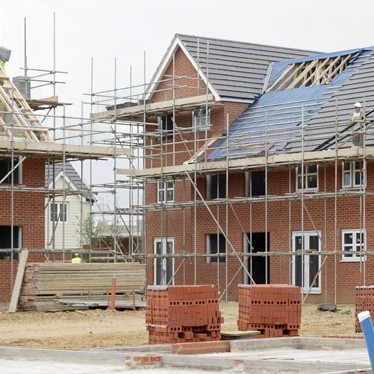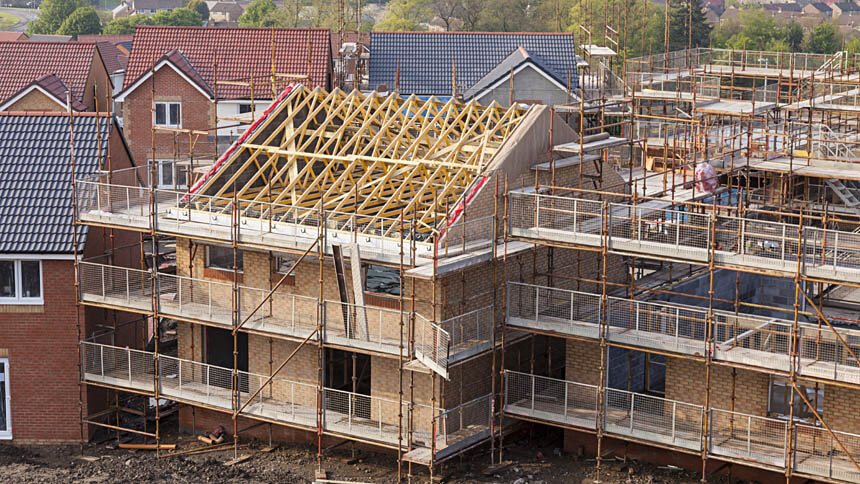
The Office for National Statistics has released its latest review of the construction industry, showing that the seasonally adjusted estimate of construction output in November 2013 is estimated to have fallen by 4.0% (£395 million) when compared with October 2013.
Both sub-sectors contributed to the monthly decline in growth with new work falling 3.9% (£240 million) and repair & maintenance by 4.2% (£155 million).
The main contribution to the 3.9% month on month decline in new work was due to a 7.1% (£140 million) decrease in private commercial other new work. Within new work there was also a 3.2% (£50 million) fall in private new housing and a 4.8% (£55 million) decrease in infrastructure.
When comparing November 2013 with October 2013 there were decreases in all sub-sectors of repair & maintenance contributing to the 4.2% (£155 million) fall. The largest sub-sector, non-housing repair & maintenance fell 3.9% (£75 million) while housing repair & maintenance fell 4.4% (£80 million).
Comparing the three months, September to November, with the previous three months, June to August, construction output grew by 0.7%. There were small increases in new work and repair & maintenance of 0.8% and 0.6% respectively.
Despite the month on month fall in November the longer term picture is one of growth with construction output estimated to have risen by 2.2% when comparing November 2013 with November 2012, the sixth consecutive month on a year ago increase. The 2.2% year on year increase in all work was due to a 3.2% increase in new work and a more modest 0.6% increase in repair and maintenance.
This longer term growth is confirmed when comparing the three months, September to November with the same three months twelve months ago. Over this period all work increased by 5.1%. The components of all work, new work and repair & maintenance, increased by 5.3% and 4.7% respectively.
Construction output estimates are a short term indicator of construction output by the private sector and public corporations within Great Britain and are produced from a monthly survey of 8,000 businesses in Great Britain. The estimates are produced and published at current prices (including inflationary price effects) and at chained volume estimates (with inflationary effects removed) both seasonally adjusted and non-seasonally adjusted.
Construction output is a component in the production approach to measuring gross domestic product (GDP), accounting for 6.3% of total GDP, based on 2010 weights. Due to the high value of construction in GDP and its stand alone status as a key economic indicator, the construction estimate is widely used by economists and industry specialists as an aid to economic interpretation and forecasting.
In November 2013, construction output slowed to an annual growth rate of 2.2%, down from 5.1% in the year to October 2013 (Figure 1). November’s monthly growth rate, a fall of 4.0%, was the sharpest contraction so far in 2013, and has contributed to the slowdown in annual growth since the increasing trend seen in the summer months. The latest data shows that the fall in construction output was broad based across sectors, with new work and repairs & maintenance both falling by around 4%.
The Bank of England’s Agents’ Summary of business conditions in December reflected that residential construction had strengthened in recent months, although commercial construction remained subdued. This is also mirrored by the longer term picture seen in ONS construction data, which show that levels of residential construction output lost during the economic downturn are being recovered at a faster pace than commercial construction.
In the 12 months to October 2013, UK house prices increased by 5.5%, an indication of growing demand for housing. This trend was also reflected in the Bank of England’s Credit Conditions Survey, which reported a significant increase in the demand for mortgage lending in Q4 2013. The stronger housing market in 2013 may have driven the growth in public and private housing construction, which increased by 10.1% and 13.8 % respectively in the first 11 months of 2013.
GDP growth for Q3 2013 was unrevised at 0.8%. Although the rate of construction growth has slowed in November, its performance from June to October has outperformed the production and services sectors, which have grown by 3.2% and 2.1% respectively in the year to October 2013.




















